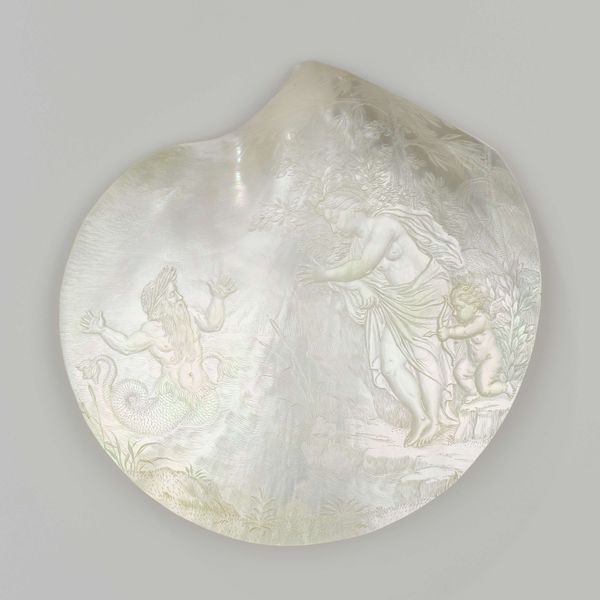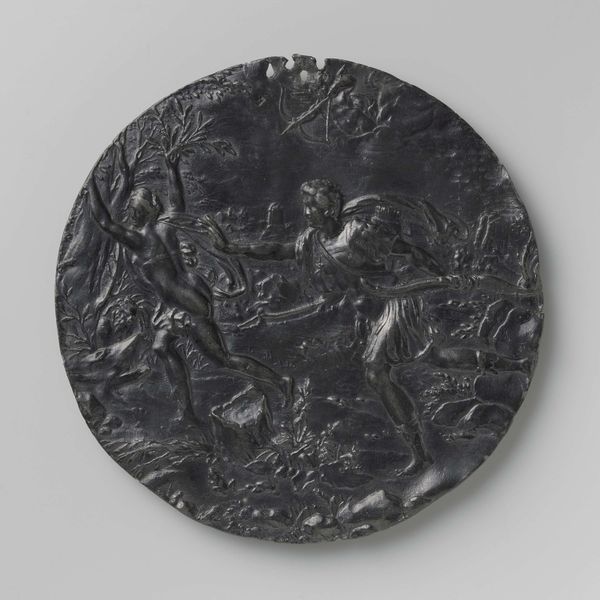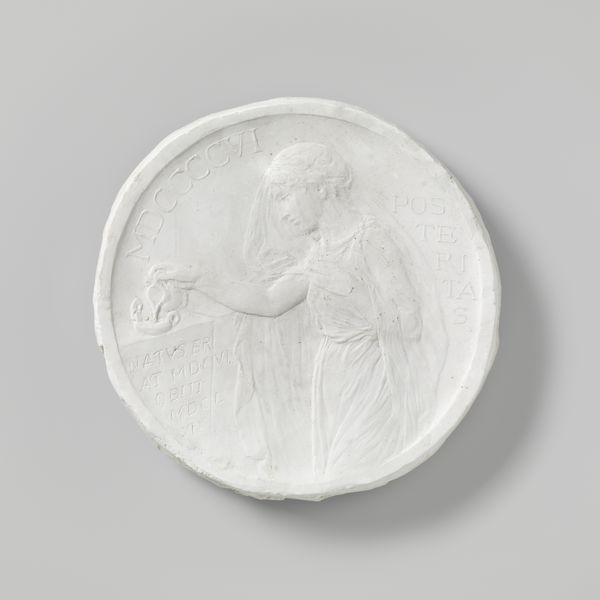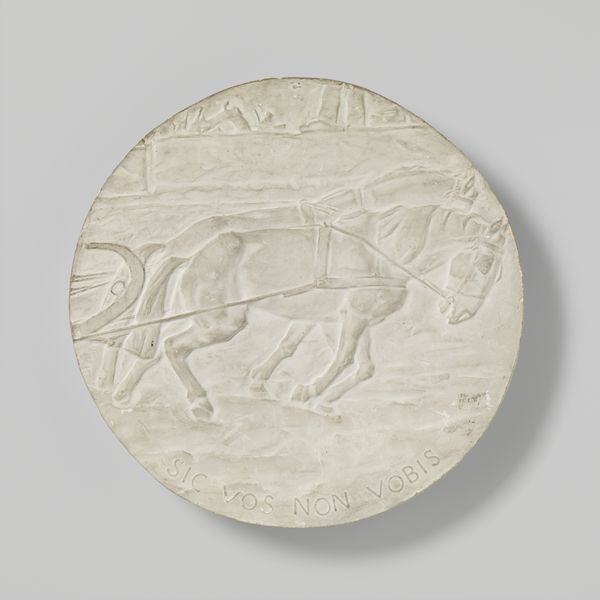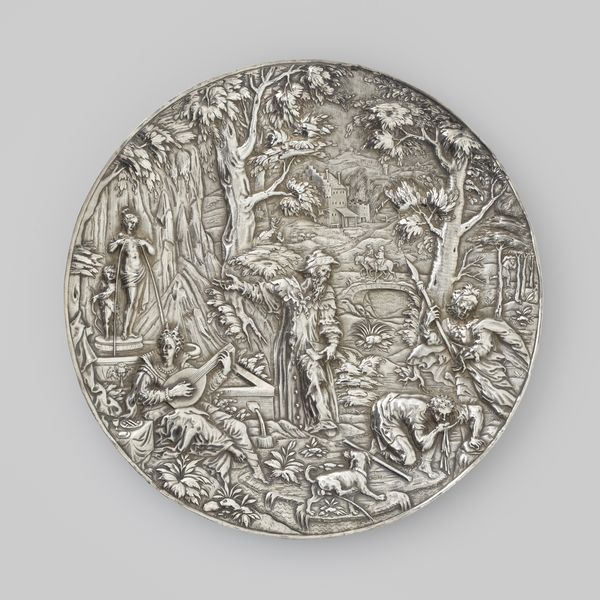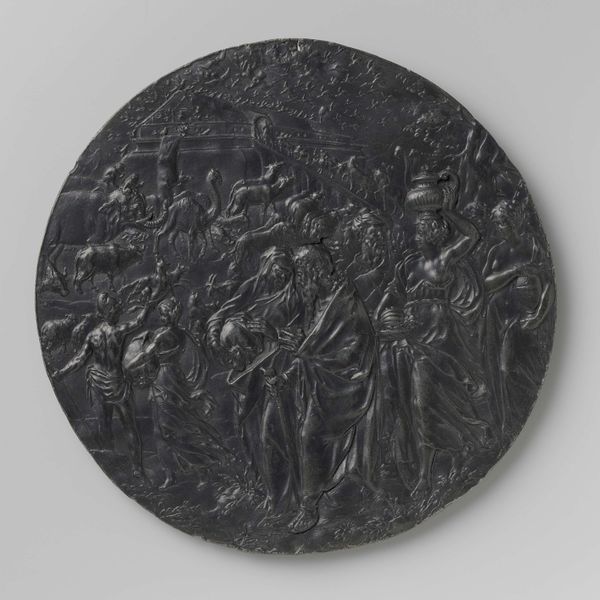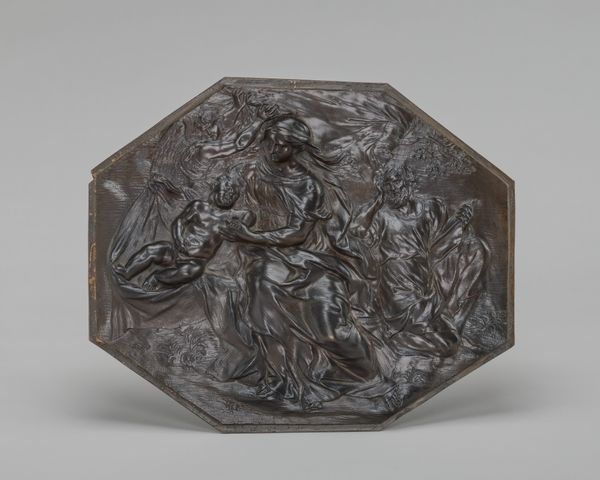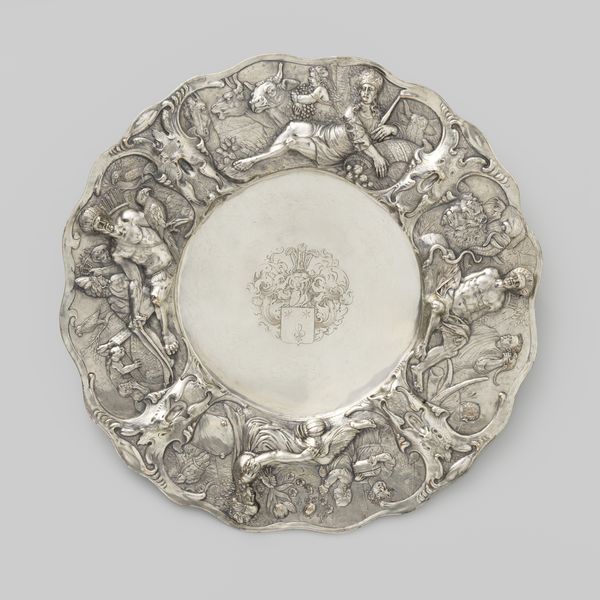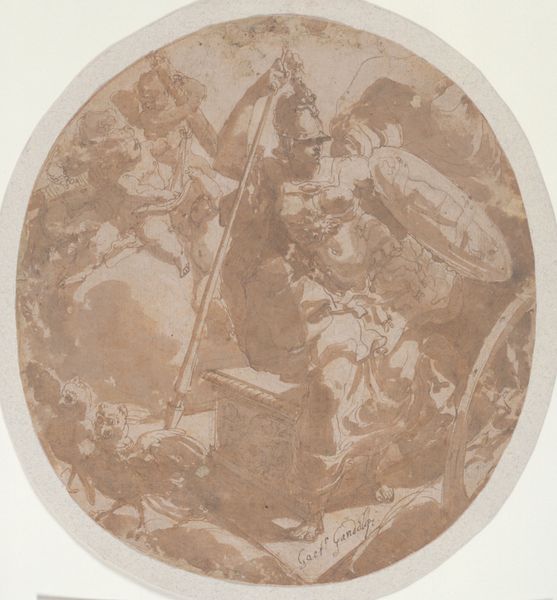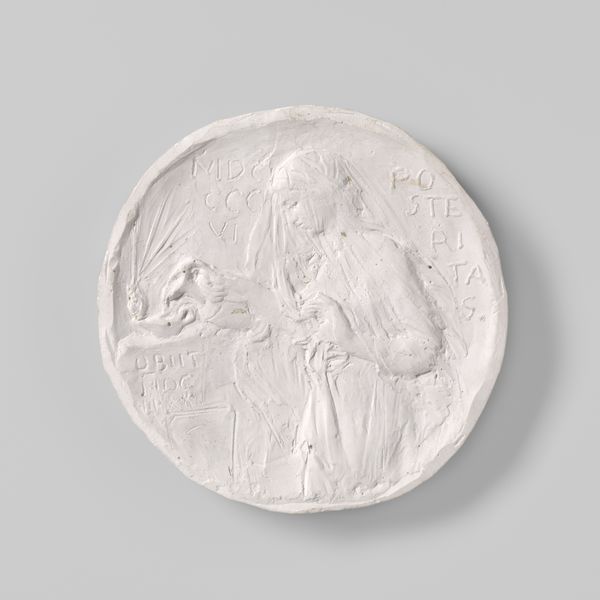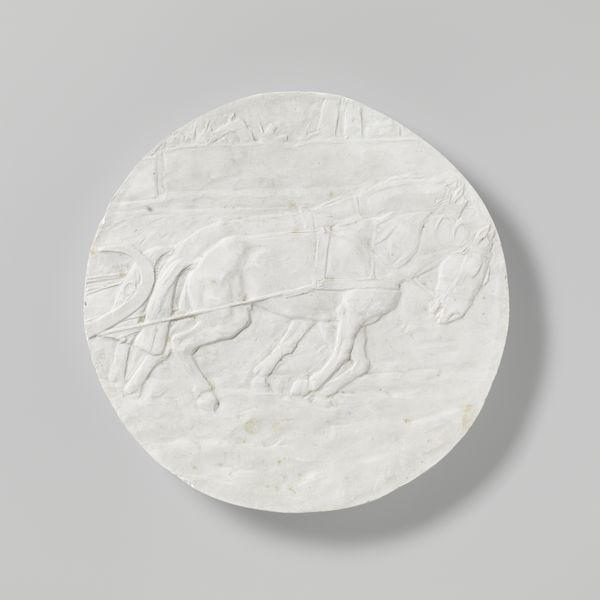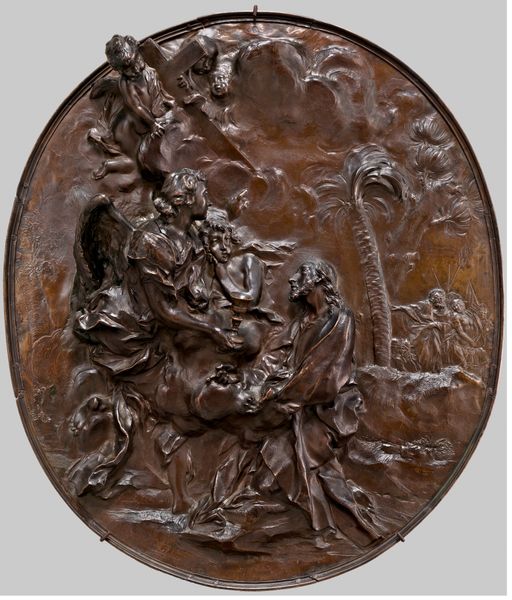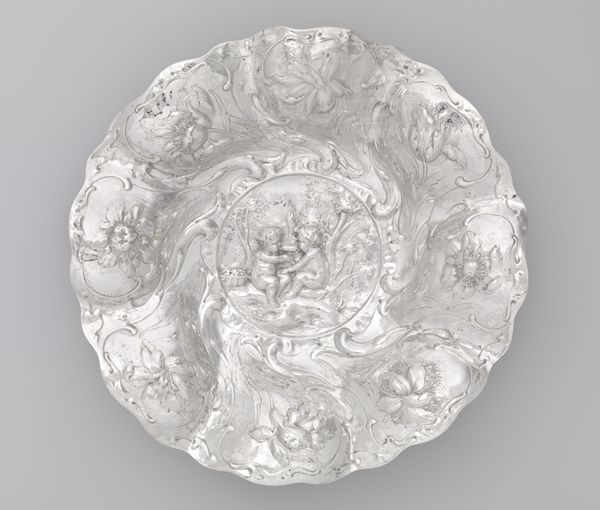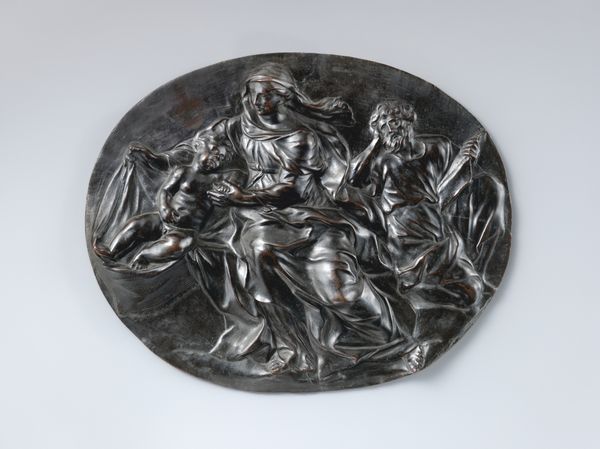
carving
#
carving
#
narrative-art
#
baroque
#
landscape
#
figuration
#
miniature
Dimensions: height 9 cm, width 8 cm, thickness 1 cm
Copyright: Rijks Museum: Open Domain
Editor: We’re looking at "Two Carved Shells," made around 1670 to 1700, possibly by Cornelis Bellekin. The narrative, carved in incredibly fine detail onto the mother-of-pearl, is quite captivating. The material itself gives off an ethereal shimmer, and there are miniature seashells included! What strikes you most about its visual composition? Curator: The interplay of light and shadow, achieved solely through meticulous carving, is fascinating. Note how the artist exploits the natural curvature of the shell to create depth and perspective. The formal relationships between the figures and the landscape elements seem carefully considered, even if their narrative significance remains ambiguous to a modern viewer. Editor: Ambiguous in what way? It feels almost dreamlike. Curator: Precisely. We might consider how the composition directs the eye – the progression from the figure to the fantastical sea creature to the airborne figure. The shell form itself serves as both a boundary and a frame, creating an almost hermetic, self-contained world. Do you perceive any inherent tension between the surface and the imagery represented? Editor: The smooth surface and delicate carvings do create an interesting tension. It’s almost paradoxical - such fine details carved on a robust object. It definitely makes me think about how Baroque art uses dramatic, often contrasting elements. Curator: Indeed. The materiality contributes to the work's meaning as much as the representation itself. And how that careful, delicate, even fragile effect is belied by the substantial feel and hard form. Editor: This conversation has really broadened my appreciation. I initially responded to the dreamy narrative, but now I'm intrigued by how the materials and composition create multiple layers of meaning. Curator: I concur. The aesthetic experience resides in that complex interplay, a testament to the power of formal analysis.
Comments
rijksmuseum about 2 years ago
⋮
Bellekin transformed nature into art, producing objects perfectly in keeping with the 17th-century concept of a collection of rarities. VOC ships brought back oyster shells from the Indian Ocean, which Bellekin carved with scenes from Greek mythology in low relief: Perseus on his winged horse rescuing Andromeda, and the nymph Scylla reaching out to the sea god Glaucus.
Join the conversation
Join millions of artists and users on Artera today and experience the ultimate creative platform.
